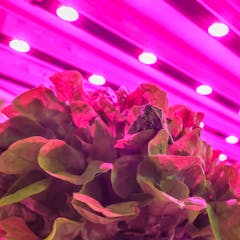
Articles on Crops
Displaying 41 - 60 of 135 articles

If rolled out worldwide, our method could replace a quarter of all the synthetic nitrogen fertiliser used in agriculture.

Locust outbreaks are driven by unusual climatic conditions.

Just as humans can suffer from an imbalance of microbes in their gut, plants can suffer a similar syndrome in their leaves. This finding opens up new possibilities for improving food security.

Reducing our intake of discretionary foods such as cakes, biscuits, pizza and hot chips is the best way we can make our diets more sustainable.

Aboriginal people once used native grasses to produce bread. So let’s resurrect Australia’s ancient breadmaking tradition.

Fungi and other organisms called oomycetes are
highly adaptable. That’s bad news for the global food supply.

We must stop using biosolids for farmlands immediately, especially when alternative ways to recycle wastewater sludge already exist.

Victory gardens were popular during wartime, and have made a comeback during the current pandemic.

And why development funders should listen to smallholder farmers

Plants have evolved techniques for protecting themselves from heat and insect attacks – but when both these stresses happen at once, one defense may neutralize the other.

Through genetic detective work, scientists have identified missing links in the tomato’s evolution from a wild blueberry-sized fruit in South America to the larger modern tomato of today.

Nigeria recently approved the world’s first GM cowpea, which provides full protection against the pod-borer Maruca, a major problem for this important crop.

New research shows even brief hot spells can damage seed quality.

Most of the maize consumed in Kenya is never even tested for aflatoxin.

CC BY-NC-ND4.79 MB (download)
Combining and fermenting indigenous African grains can help counter malnutrition on the continent.

Certain wasps and flies which lay their eggs in specific species such as aphids could be a sustainable form of pest control.

Pesticides have become almost essential for agriculture, but their misuse can have negative effects on crops too.

It’s unlikely that all species of bees will go extinct anytime soon – but current losses could still have a terrible impact on food supplies and ecosystems.

There are plenty of barriers, but if we really want to we can feed the world on plant protein (largely from legumes).

Indoor plant factories have high energy costs since LEDs replace the sunlight outdoor plants get for free. Scientists found a way to dial back how much light is needed by breaking it into tiny bursts.





